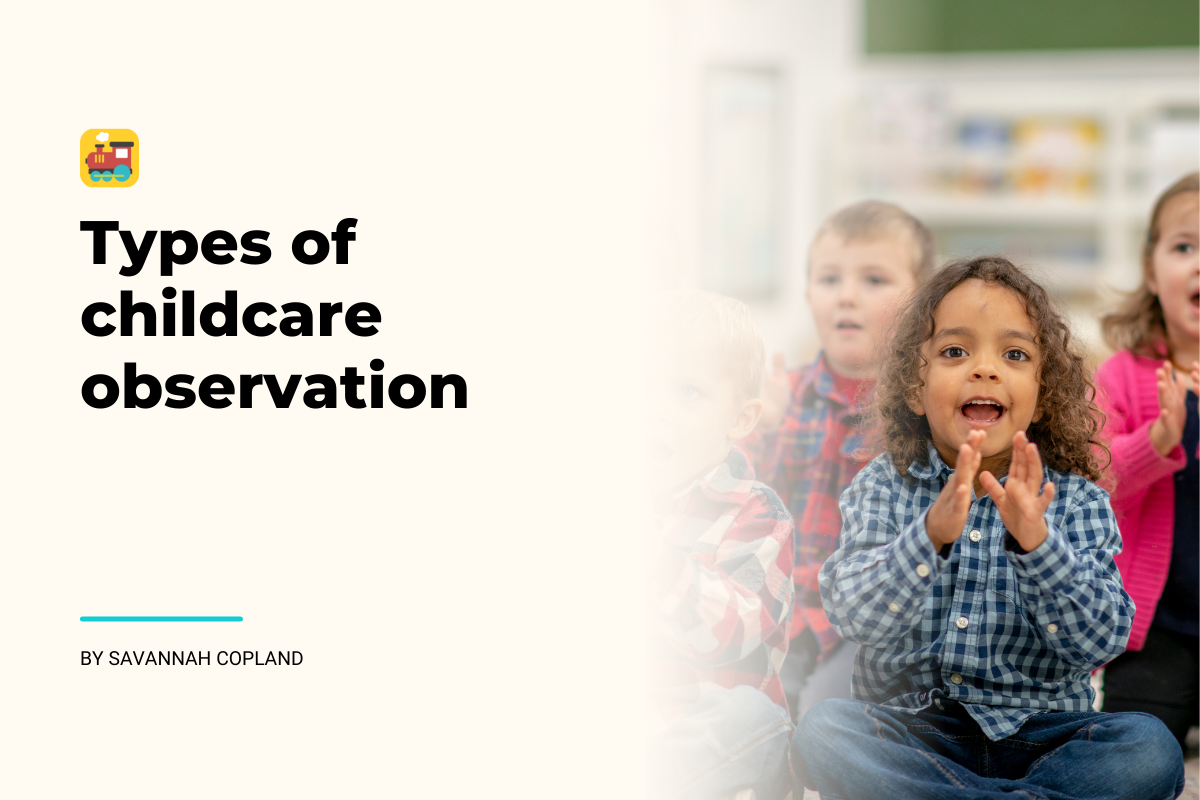There are pros and cons to each type of early learning observation method.
Early childhood observation in an educational setting is key to ensuring proper development in young children and can provide insight into student learning. There are several different observational methods, each with its own pros and cons. The type of evaluation used can depend on the setting, the child’s personal history, or the overall goal of the assessment itself.
Time sample observation:
This form of observation is intended to time track a specific behavior of a single individual or group of children. The targeted conduct is observed, noted, and time-stamped for cumulative review later on. This type of assessment is good for statistical records or analysis but is limited in scope. The documentation doesn’t consider other behavioral or historical elements surrounding the observed event.
Work samples
Children’s work samples can be collected by the teacher to determine if the student is developing cognitive and creative skills. This as an opportunity for the educator asses and understand the child’s abilities and interests in order to create more suitable lesson plans and overall better learning experiences. Examples of work samples include: paintings, drawings, crafts and writing samples.
Narrative or running record observation:
Record keeping through narrative and anecdotal notes is a useful way to monitor a child’s development and progress. Narrative notation is most similar to a diary entry, wherein the author makes general notes about the entire observation, including nuanced and deliberate behaviors. Running records are different from anecdotal notes because they are more thorough. Anecdotal observations are typically limited to a specific act or occurrence that happened during the observation period.

Rating scales or rubric scoring:
Scores or rating systems can be helpful for making baseline observational assessments. They are especially useful for identifying individuals that are well below or above the developmental average. Scales are an excellent way to conduct an initial evaluation but they don’t take into consideration any other factors, influences, or behavioral issues that the child may have.

Childcare checklist observation method
Observation checklists are a logically sequenced way to observe children that evaluates their progress from one point to another. This observation technique can provide insight into where a child is having difficulties or excelling. By watching their behavior and comparing it to a chronological set of expectations, the observer can see where problems may exist or identify opportunities to challenge the child further.
For an example, check out our free observation checklist template here.
Classroom Observation Checklist
Classroom observation checklists are an aid for preschool administration and educators to gather data in order to ensure children enjoy a positive learning environment. The inclusion of the checklists varies according to a particular purpose and the types of checklists used. The most effective observation checklists for learning and behavior should be used while examining the setup and providing detailed data subsequently.
To better understand why observation data is so essential to early development, check out our article,“The Importance of Observation in Early Childhood Education.”. To learn more about the origin of early childhood education and the many influences that make the field what it is today, check out our post about the history of early childhood education.
What types of childcare observations do you find most effective for your student learning? Share your ideas with us on Facebook.
Related Posts
- Child Care Observation: How Much Documentation is Too Much?
- Child observations critical in the early childhood setting
- How Do Child Care Apps Help With Observation? Three Ways an App Will Enhance Observation
- How to Make Health and Wellness Observations in Early Education
- Best Ways to Track a Child’s Development Using an App
- Why Observe Children at Play?


